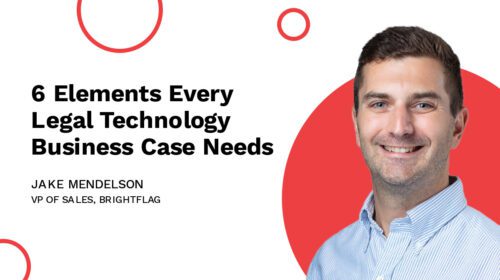3 Big Legal Spend Debates You Could Be Settling With Data
The line dividing open debates from settled questions may have moved since last you looked. But knowing how to use legal spend data and other analytics can now supply definitive answers to some surprisingly nuanced inquiries. This is incredibly important, given that raising commonly overlooked considerations and see all sides of a debate is critical to the success of any corporate legal department.
To help put these new possibilities in context, let’s look at how you might resolve three of the most financially impactful questions posed by in-house legal teams.
“Where can we find cost savings?”
In a department with a reputation so closely tied to its spend-to-revenue ratio, this question is never far from the agenda. Company-wide cutbacks or recalculated forecasts might also add urgency to the push for improved cost efficiency. Whatever your motive, the best way to spot savings opportunities is to strategically narrow your search.
While the Pareto Principle (“80/20 Rule”) is always a good guide, our research suggests that the truth may be closer to 90/10 for corporate legal spend. Approximately 10% of matters generate 90% of outside counsel expenses. So running reports on Spend by Matter and Spend by Vendor will immediately prioritize your efforts.
Once you’ve identified the projects and relationships that represent the highest percentages of your legal spend, you can begin to weigh specific cost control tactics. For example, you might decide to request a volume-based discount from the vendor(s) at the very top of your spend distribution.
Alternatively, you could run a Blended Rate report to see how a vendor’s hourly fees compare against their peers and whether you have leverage to negotiate down. You can also dig into a Timekeeper Breakdown report to see if a vendor is mistakenly assigning lower-value work to higher-seniority staff.
Finally, you’ll want to review your own role in ensuring cost efficiency. What does the Budget Compliance report have to say about the diligence of your internal matter leads? What does the Billing Guideline Compliance report reveal about the clarity of your rules and the strength of their enforcement?
Taken together, all these data points provide clear trail markers for your cost-saving search party to follow.
“Are we getting good value for money?”
The value of legal services is determined by two primary variables: Cost and quality. One is more straightforward than the other, but each can be mathematically measured.
Cost is a product of price and time. Both factors are easy enough to spot in a legal invoice, but combining and comparing these data points across matters and vendors is what unlocks the most valuable insights.
A Blended Rate report is a great starting point, as it wraps matter resourcing and duration data into a single cost efficiency metric. A Matter Comparison report can then add further context to your analysis by highlighting how vendors have historically priced similar tasks.
Next, you’ll want to hold those cost insights up against their corresponding quality ratings. And to do that, you first need to transform the latter category into quantitative data.
All you need is a simple scorecard that enables you to measure the service traits you value most in a standardized format. For example, Brightflag customers can quickly rate vendor performance when closing matters and reference comparative reports.
These kinds of analyses are bringing a new level of objectivity to the value equation, removing both doubt and bias from critical vendor management and resource selection decisions.
“How much should this matter cost?”
Legal services have long been one of the least predictable business expense categories. That sense of futility is surely one reason this cost question often isn’t raised until work is underway. Data analytics are gradually changing this dynamic, though, and giving rise to more proactive legal spend management strategies.
The first factor to consider when pricing a new matter is novelty. If the work type is entirely unique, then you may not have the benefit of historical data. (And that will be even more reason to set budgets and track costs you can use as feedback in the future.) In these scenarios, your budgeting conversations will have to focus more on your qualitative assumptions of the appropriate fee model and resourcing profile.
Most of your legal service needs will have some precedent, however. And that’s when a Matter Comparison report can become a crucial financial advisor.
Do you see a high volume of similar matters? If so, you might consider proposing an alternative fee arrangement such as a monthly retainer if you expect the trend to continue. Similarly, low variability within matter subtotals might prompt you to trade hourly billing for a fixed-fee model instead.
If you are sticking with an hourly billing model, then Blended Rate and Timekeeper Breakdown reports can help you identify past resourcing trends you may or may not want to replicate in this new matter. For example, maybe you previously underestimated how much partner time the work truly merits.
You can also take a look at Budget Compliance reports once your final estimate starts coming into view. Low compliance and frequent budget updates may suggest that your previous cost estimates were more hopeful than feasible. Conversely, flawless compliance could indicate that you’ve actually been including too much padding in your financial projections.
Developing your data advantage
Whether it’s a question of how to budget, reduce, or defend your legal spend, data can be a clear and persuasive voice in each debate. Those attributes will take time to develop, but it’s never too late to start nurturing this resource.
So it’s worth asking: Do you trust the systems you have in place today to capture and present the data you’ll want in the future?


